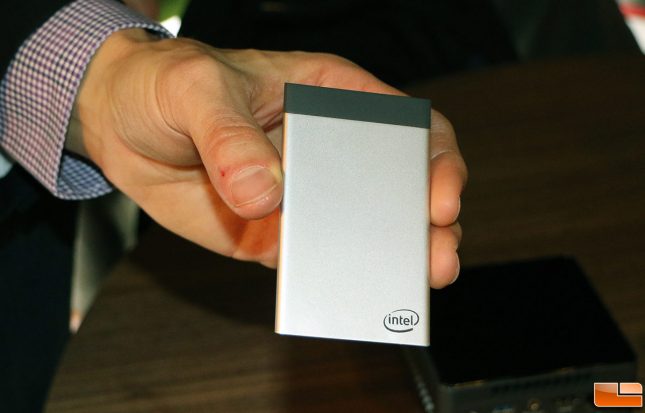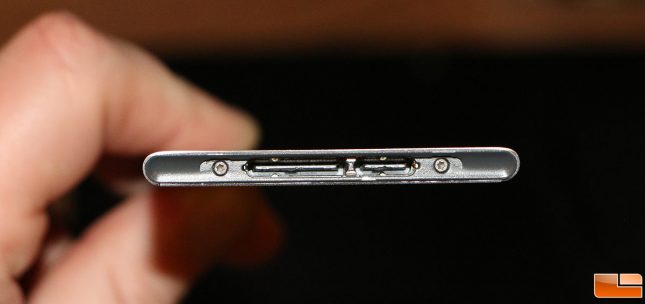Intel Compute Card – Credit Card Sized PC Debuts at CES 2017
Meet the Intel Compute Card that was announced yesterday at CES 2017. The credit card size device is a ‘compute module’ with all of the elements of a standard compute inside the tiny 95 x 55 x 5 mm thick device. That means there is an Intel SoC, storage drive, memory, Wi-Fi and Bluetooth connectivity all tucked inside. Intel will offer a full range of 6 Watt Intel processors inside all the way up to and including Intel 7th Core ‘Kaby Lake’ processors with vPro. The concept behind this is that you can now add compute and connectivity to everything. Companies that make smart devices will be able to make a Intel Compute Card slot into their device and then every year companies can have a quick and simple way to upgrade their models every year. The Intel Compute Cards modular design will allow it to be used in virtually any product, anywhere and Intel is already working with companies to integrate the form factor in devices in the following fields; IoT, intelligent vending machines, digital signage, automobile, smart TVs, smart refrigerators, drones and more.
The Intel Compute Card features a new connector that we have never seen before, but it’s basically USB-C with an extension and it is an industry standard and not a propitiatory connector. Basically it has a USB Type-C connection is able to handle USB, HDMI, DP and so on while the other extension connector will PCIe, USB and open lanes for future expansion. It also sounds like you can run multiple Intel Compute Cards in a single system, so more powerful devices can use multiple cards.
The Intel Compute Card will be made available mid-2017. Right now Intel has been talking with divisions in Dell, HP, Lenovo, Sharp, InFocus, DTx, and TabletKiosk. Right now they are seeing a ton of interest in monitors and that many of the first design wins will likely be coming from that segment. The All-In-One monitor market is especially showing interest as you don’t have to throw away the entire device to upgrade. Ultimately, you’ll be able to swap out the Intel Compute Stick when an upgrade is desired.
The only downside is the cost of modularity as there is an inherent cost to splitting this out and this device doesn’t cool itself. While the device itself doesn’t have any moving parts it will need to have a heatsink to help keep the tiny computer cool. Right now Intel is using a heatsink and fan to keep the external skin temperature at 61C, but it can technically go higher than that. Active cooling won’t work on all devices, so there is an embedded mode that will be used for thinner devices. We didn’t get all the details on how embedded mode works or how many Watts the entire solution consumes, but Intel will be giving us those details closer to launch.
More information on the Intel Compute Card can be found on the product page that came out yesterday.


